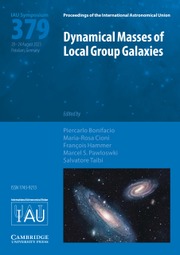No CrossRef data available.
Article contents
NGC 3242 and the enigmatic nature of its Low Ionization Structures: A MUSE perspective
Published online by Cambridge University Press: 06 October 2025
Abstract
The objective of our study was the spectroscopic analysis of the PN NGC 3242, which contains a pair of low-ionization structures (LISs). For our analysis, MUSE data were used in conjunction with the SATELLITE code for a spectroscopic analysis in two spatial dimensions. Additionally, infrared images from Spitzer Space Telescope (SST) were employed to search for potential H2 emission at the LISs. The preliminary results revealed that the electron temperature calculated from [N II] diagnostics lines is approximately 12,000 K at the LISs, while the thorough examination of MUSE data has led to the identification of the [C I] 8727 Å emission line emitted only from the LISs. This result may imply that LISs are the optical counterpart of a dense molecular core. Spitzer’s data didn’t reveal the existence of H2 at LISs, but three rings were identified around the main body of the PN.
Keywords
Information
- Type
- Poster Paper
- Information
- Proceedings of the International Astronomical Union , Volume 19 , Symposium S384: Planetary Nebulae: A Universal Toolbox in the Era of Precision Astrophysics , December 2023 , pp. 432 - 434
- Creative Commons
- This is an Open Access article, distributed under the terms of the Creative Commons Attribution licence (https://creativecommons.org/licenses/by/4.0/), which permits unrestricted re-use, distribution and reproduction, provided the original article is properly cited.
- Copyright
- © The Author(s), 2025. Published by Cambridge University Press on behalf of International Astronomical Union


